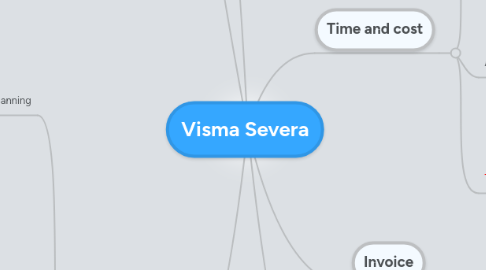
1. Customer
1.1. Sales case
1.1.1. Sales process
1.1.2. Value
1.1.3. Probability
1.1.4. Lead source
1.1.5. Expected sales date
1.2. CRM
1.2.1. Address and Contact
1.2.1.1. Contact role
1.2.1.2. Contact keyword
1.2.2. Project and invoice history
1.2.3. CSV import
1.3. Activity/communication
1.3.1. Calendar
1.3.2. Exchange/Google Cal
1.3.3. Email integration
1.4. Segmentation
1.4.1. Industry
1.4.2. Size
1.4.3. Location
1.4.4. Custom
1.5. Batch email sending/integration
2. Project
2.1. Planning
2.1.1. Phase
2.1.1.1. Status handling
2.1.1.2. Duration to calculate start date/deadline
2.1.2. Activity/Task
2.1.2.1. Start date link to phase start/deadline
2.1.3. Gantt
2.1.3.1. Multiple projects in one Gantt
2.1.4. Resourcing
2.1.4.1. Automation
2.2. Price setting
2.2.1. Product
2.2.2. Price per hour
2.2.3. Flat rate
2.2.4. Pricelist redesign
2.2.4.1. Cap billing model based on hours
2.2.4.2. Flat rate and product merge
2.2.4.3. Pricelist versions / date effective
2.2.4.4. Percentage update to prices
2.2.4.5. Excel import/export
2.2.4.6. Volume pricing per product
2.3. Financial
2.3.1. Forecast
2.3.2. Revenue recognition
2.3.3. Profitability
2.3.4. Work hours
2.3.4.1. Value of project based on hours (fixed price)
2.3.5. Completion %
2.3.6. Multiple customers on one case
2.3.7. Forecast/Target/Budget
2.4. Files and links
2.5. Extranet
2.6. Proposal
2.6.1. Redesign
3. Report
3.1. List
3.2. Dashboard
3.2.1. Functional dashboards
3.3. Excel/CSV export
3.4. Graphical reports
3.5. KPI
3.6. Case, user and invoice change log / audit trail
3.7. 3rd party reporting tool integration
4. Legend
4.1. 2013
4.2. 2014
5. Time and cost
5.1. Work hour
5.1.1. Day/week view
5.1.1.1. Day view redesign
5.1.2. Stopwatch
5.1.3. Overtime %
5.1.4. Mobile hour reporting
5.1.5. Flextime
5.1.6. Approval
5.1.6.1. Separate approval from billing
5.1.7. Billable % management
5.2. Absence
5.2.1. Link absence to timesheet
5.2.2. Activity / Calendar
5.3. Travel reimbursement
5.3.1. Kilometer
5.3.2. Per diem
5.3.3. Other costs
5.3.4. Approval
5.3.5. Summary report
6. Invoice
6.1. Recurring billing
6.2. Credit note
6.3. Reminder
6.4. Sending
6.4.1. Batch email sending of invoices/integration
6.4.2. PDF (mass pdf)
6.4.3. Print (mass print)
6.5. Redesign
6.6. Custom stationary support/integration
7. Organization
7.1. Business unit
7.1.1. User
7.1.1.1. Supervisor
7.1.1.2. Access rights profile
7.1.1.2.1. Redesign
7.1.1.3. Labor cost/h
7.1.2. Invoice details
7.2. Cost center
7.3. Integration / API
7.3.1. Sync
7.3.1.1. Customer
7.3.1.2. Project
7.3.1.3. User
7.3.1.4. Product
7.3.1.5. Business unit
7.3.1.6. Cost center
7.3.2. Transfer
7.3.2.1. Order/invoice
7.3.2.2. Cost/item
7.3.2.3. Hour
7.3.3. Licencing system integration
7.3.3.1. Invoicing system integration
7.3.4. Google Drive
7.3.5. Exchange / Google Calendar
7.3.6. Jira
